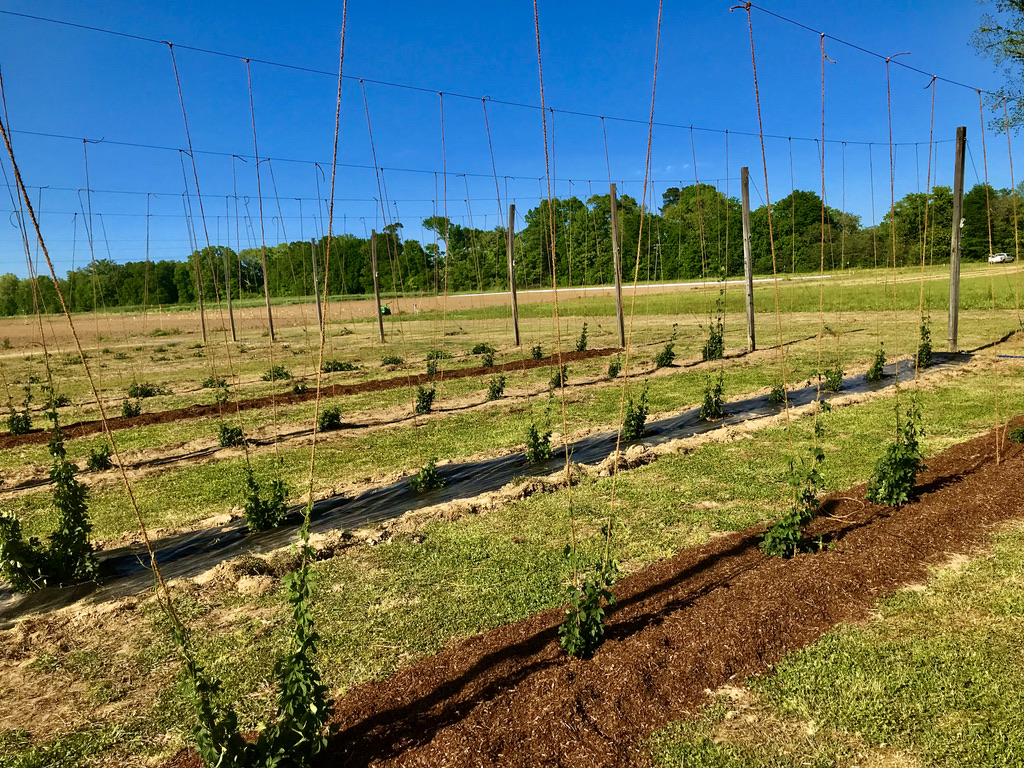
Increased interest in locally-sourced hops has researchers at Auburn University studying the viability of producing the crop in the Southeast.
Auburn specialists, including Andre da Silva, Assistant Professor of Vegetable Crop Systems at Auburn University, implemented the first hop yard in the E.V. Smith Research and Extension Center to evaluate hops as an alternative crop in Alabama. Preliminary data showed the potential of this crop to be established on small to medium-scale farms.
“Cultivar selection is key for growers adopting hop as an alternative crop and preliminary results indicated that Cascade was the hop cultivar that performed the best,” da Silva said.
More Research Needed
Additional research is still required to evaluate the adaptability of new cultivars to the hot and humid conditions of the Southeast. Andre da Silva, in collaboration with Alex Harkess at Auburn University and Hudson Alpha Institute of Biotechnology, is currently working to develop a hop cultivar for the Southeast.
“The goal is to promote an Alabama and southeastern U.S. hop industry, and science-based information is required to assist growers with making investments and farm management decisions,” da Silva said.
Hops are perennial plants that develop twining stems called bines. Hop bines grow fast, and if properly managed, growth can be as fast as 12 inches a day. Commercially grown hop plants are trained to grow up on high trellis, typically 12 to 18-feet tall.
After the growth period, hop plants begin to flower, meaning they have entered the reproductive stage of crop development. The onset of flowering in hops is triggered by the shortening of day length. Hop plants bloom when day length becomes shorter than 16 hours. In regions where day length is shorter than 16 hours, like most of the Southeast region, it is common to use artificial lighting to help create long day conditions to ensure bine growth.
Flowers will then develop into cones. Hop cones are the harvestable product of a hop plant and are the primary ingredient that adds aroma, bitterness and flavor to beer.
The Pacific Northwest supplies nearly 90% of hops produced in the country.









